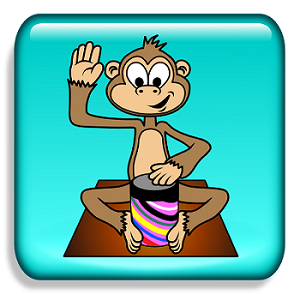
Children learn through doing, and the same goes for learning music. A child cannot develop musicality by simply deciphering black blobs on a page of music. He cannot play an instrument with any musical feeling until he (or she) can first feel the pulse of the music through his body, and that steady beat is the foundation of music.
Our classes help children develop a sense of steady beat through their entire bodies, while also varying tempo and dynamics.We begin this development from the baby class. If a child is not yet walking we can use the adult’s body to move the child, and input that beat.
Rhythmic and melodic patterns are sung and played on the body before on instruments. This way, when those patterns are transferred to instruments the child’s body has already internalized the sound and memorized the movement patterns required to make the music.
Through our classes we:

Develop a sense of steady beat through movement, using props and playing percussion instruments.

Introduce rhythmic pattern through whole-body movement and then instrument playing.

Relate sounds to images as we begin reading music through pictorial, graphic and conventional notation.

Use a huge range of visually colourful, tactile stimuli to engage the learning.

Play a range of non-melodic instruments including drums, woodblocks, shakers etc.

Add melodic percussion instruments as children mature: chime bars, xylophones and huge marimbas,

Add feature instruments: keyboard, recorder, ukulele and guitar in the programmes for school-aged kids.

 Children learn through doing, and the same goes for learning music. A child cannot develop musicality by simply deciphering black blobs on a page of music. He cannot play an instrument with any musical feeling until he (or she) can first feel the pulse of the music through his body, and that steady beat is the foundation of music.
Children learn through doing, and the same goes for learning music. A child cannot develop musicality by simply deciphering black blobs on a page of music. He cannot play an instrument with any musical feeling until he (or she) can first feel the pulse of the music through his body, and that steady beat is the foundation of music. Develop a sense of steady beat through movement, using props and playing percussion instruments.
Develop a sense of steady beat through movement, using props and playing percussion instruments. 






